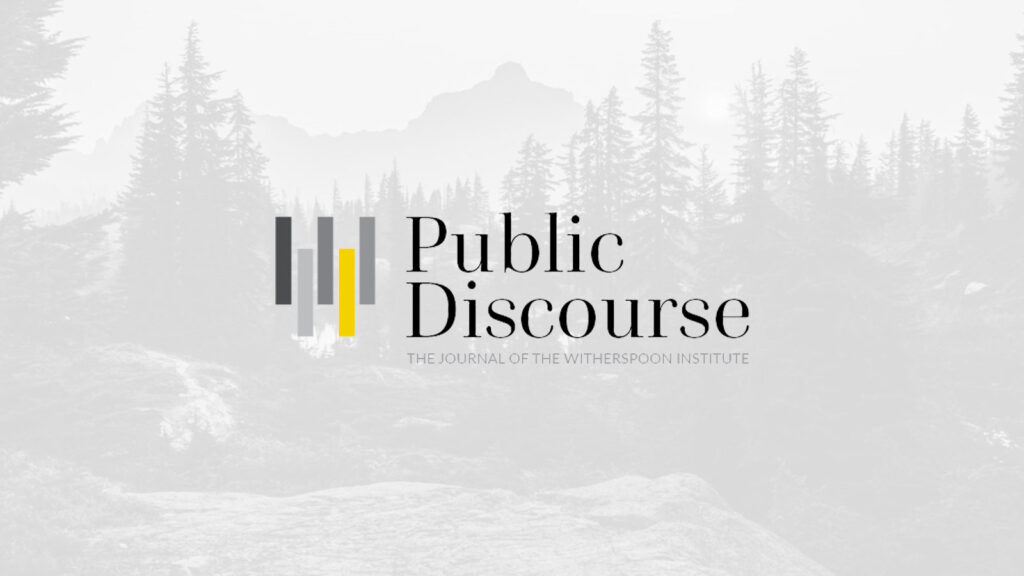We all have a right to live, but that right is often wrongly understood. Ethicists, lawyers, and judges frequently assume it entails either a right to terminate our lives at will or an obligation to extend them by any means possible. With vigor and wit, John Keown’s The Law and Ethics of Medicine disposes of these misunderstandings, clarifying the legal principle of the right to life in the medical context. Keown is just the person to undertake this project. As a former teacher of the law and ethics of medicine in the Law Faculty at Cambridge, and a holder of the prestigious Doctorate in Civil Law from Oxford (where he studied under John Finnis), Keown is the Rose F. Kennedy Chair in Christian Ethics at Georgetown University whose work has informed U.S. Supreme Court and English Court of Appeal decisions. His book handles the most central and important questions and actual cases in medical law, critiquing leaders in the field who reject (and usually misunderstand) a consistent pro-life position. If you only have one book on your shelf about medical law, this should be it.
How Should We Value Human Beings?
In the first part of the book, Keown distinguishes three different approaches to the value of human beings: Quality of Life, Inviolability of Life, and Vitalism.
According to the Quality of Life view, some human lives are not worth living. Thus, assisted suicide, voluntary euthanasia, and perhaps even non-voluntary euthanasia are permissible in some circumstances. Reflecting this view, Brittany Maynard, the twenty-nine-year-old cancer patient, justified her physician-assisted suicide as preventing a loss of her dignity.
Start your day with Public Discourse
Sign up and get our daily essays sent straight to your inbox.The Inviolability of Life view is that intentional killing is not ethical and should not be legally permissible, yet that it is often acceptable to withdraw life support. Even if a particular medical treatment is worthless, the human patient is never worthless. In this view, Brittany Maynard had no reason to commit suicide, because all human beings, even the very sick, always have basic dignity. Yet she also had no obligation to pursue burdensome treatments to extend life. She would be wrong to end her life, but right to let it take its course.
According to the Vitalistic view, every effort must be made to extend the duration of human life. In this view, the cancer patient must employ all possible medical options in order to remain alive, even if such options are psychologically repugnant, physically painful, or experimentally untried. Keown notes that many critics misinterpret the Inviolability of Life principle as if it were Vitalism. Unlike Vitalism, the Inviolability of Life principle allows that if some treatment is more burdensome than beneficial, it may be withheld or withdrawn, even if the patient’s life is shortened as a side effect. In practice, advocates of Vitalism exist in tragic situations where parents or a spouse push for all possible medical interventions absent any reasonable hope of success. Vitalism in practice is a real problem both because it needlessly uses medical resources and because it raises the hopes of loved ones in vain. In the realm of theory, however, Vitalism exists only in the minds of critics who caricature the inviolability of life. I know of not a single scholarly advocate of it.
Should the Law Protect Human Life as Inviolable?
The law cannot remain neutral among these three views. Statutes and judicial decisions implicitly embody or explicitly endorse the principles of Vitalism, the Inviolability of Life, or the Quality of Life view. Thus, “the central question is not whether but which philosophical attitude the law should express.” Keown argues, both on historical and philosophical grounds, that the law is morally and intellectually misshapen when it does not embody the Inviolability of Life view.
Keown rightly blames our current confusion on the founders of the academic discipline of medical law, Glanville Williams and Ian Kennedy. Williams understands the principle that everyone has a duty not to intentionally kill human beings as fundamentally a theological principle, and therefore as suspect in a pluralistic regime dedicated to religious tolerance. Keown notes that the Inviolabililty of Life is no more a “religious” principle than norms against theft or perjury. The principle of respect for every human being is found not just in theological sources but also in the principles of the Stoics, the Hippocratic Oath, the philosophical ethics of Immanuel Kant, and the U.N. Declaration on Human Rights. Even if the principle were of exclusively Christian origins, the genetic fallacy warns against confusing the origin of a belief with the truth or falsity of that belief.
Kennedy criticizes the principle of life’s inviolability, arguing that the distinction between intentionally taking life (a violation of the principle) and not intending but foreseeing that life will be shortened (not a violation of the principle) cannot have legal weight. Whatever the doctor’s actual intentions, a physician may simply claim, “I wasn’t intending to kill the patient, but merely foresaw her death.” If a doctor “plays the game” cleverly, the physician can evade legal responsibility for intentional killing.
But legal proceedings can and do evaluate evidence about the intentions of agents in a variety of contexts. “One might as well argue,” Keown retorts, “that the law against theft is ambiguous and should be relaxed because defendants may claim they honestly believed they had the owner’s consent to take property.” Since numerous legal offenses require proof of intent, such surmountable difficulties are inherent in the prosecution of many crimes, and so pose no special difficulty in the case of medical practice.
End-of-Life Issues
The strongest section of the book treats numerous issues at the end of life. Keown examines the experience of physician-assisted suicide in the Netherlands, considers whether there is a legal right to palliative care, and analyzes the case of the withdrawal of food and water in order to end life. He also looks at the role of the physician. Doctors regularly and rightly refuse autonomous requests of patients, such as the request for narcotics for recreational use, if those requests undermine the patient’s health, which the doctor has a duty to protect. All the more so, Keown argues, is the physician’s vocation to heal incompatible with acquiescing to a patient’s request to be killed.
Legal limits on the cases in which physician-assisted suicide and voluntary euthanasia are deemed acceptable can be erased very quickly. The experience of the Dutch shows that limiting laws will not necessarily prevent a slide into non-voluntary euthanasia. If terminally ill patients with six months to live may receive help in dying, why should a person with longer to suffer be denied similar assistance? If killing benefits a patient, why deny this benefit to the disabled, who are unable to commit suicide? In practice, even modest limits on physician-assisted suicide are frequently ignored and cannot serve as adequate defense of the vulnerable. Even aside from undiagnosed depression, if assisted suicide is legal, how many competent adults nearing the end of life would be pressured into ending their lives to avoid being “selfish”?
The good news is that legislators, voters, and the courts in most European and American jurisdictions have repeatedly rejected physician-assisted suicide and euthanasia. Although it is legal in Holland, Belgium, and Luxembourg, legislative bodies and expert commissions in most other jurisdictions have rejected proposals to legalize medical killing. Despite more than seventy-five years of efforts to promote the “right to die,” the US Supreme Court, the Canadian Supreme Court, and the British Law Lords likewise have not found a constitutional right to euthanasia or physician-assisted suicide.
Conscience and Life
The issues Keown addresses are particularly important because of their link to current debates about conscience protection for health care workers. Scholars in medical law such as Bernard Dickens argue that assisting in suicide, abortion, and euthanasia are core practices in the medical profession and that a failure to perform these services violates the rights of autonomy of patients. In this view, health care professionals do not have the ethical or legal right to conscientiously reject anti-life practices. If such arguments prevail in law, then health care professionals will be faced with momentous decisions: either act against the inviolability of human life or leave the medical profession.
Such a choice would drive many people of faith out of the health care profession or into a schizophrenic division between their practice of medicine and their practice of faith. Forcing such a choice would also burden many non-religious people of good will who hold that all human beings are equal, endowed with inalienable rights. If the views Keown critiques in The Law and Ethics of Medicine prevail, the losers will include not just the people driven from the medicinal profession, but especially vulnerable patients at risk. This class potentially includes us all.













